The 16 Most Stunning Things to See in the Night Sky
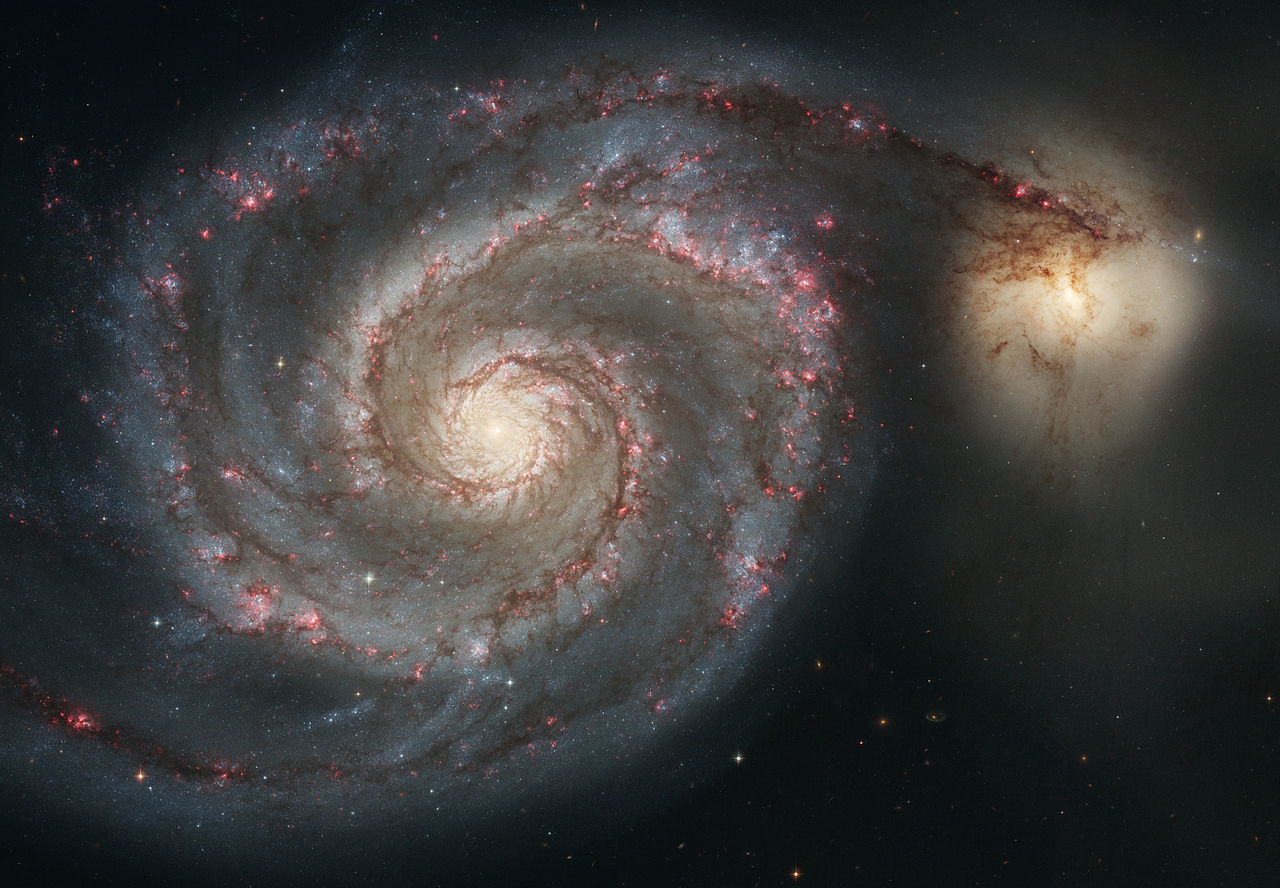
Generally, this account is aimed at educational value and intrigue. However, I've recently felt like doing something a bit different, instead today I would like to share with you my personal selections for the best objects one can view in the night sky. Note however, there may be a bit of hemisphere bias present here, as I live in the northern hemisphere and thus don't see many of the things that are out there.
Tier 4: Planetary objects.
4a. Venus
Venus is a truly astonishing sight when viewed just with your naked eye. Mostly because of just how dominant it is on the scale of brightness. Only eclipsed by the moon at night. It has an atmosphere of CO2 and is coated in reflective clouds, thus making it very bright by appearance, the brightest planet or any object outside of the sun and moon for that matter.
Distinguishing it from the other planets isn't hard once you've seen it. It bears a golden-tan coloration, and the light is perfectly stable and without twinkle. And when looking through a telescope, one will see a strange looking object. It will be a crescent shape, similar to the moon, but far smaller and without craters. This crescent shape comes from the fact that it is closer to the sun. So at certain times when it's close it will be a thing but larger crescent, and when farther it will be a gibbous shape and appear smaller.

4b. Jupiter
Perhaps the most detailed of them all behind the likes of the moon, Jupiter when viewed through a high power telescope shows off it's beautiful gaseous surface and color contrast. This planet's full day is ten hours long, so bear in mind that it will in fact turn over a while. I've actually seen this planet's famous red eye hurricane come into view as I was watching it.
It's also worth noting that Jupiter has four visible companions known as the Galilean Moons orbiting it at all times. They don't stretch particularly far from the planet and are easily visible. Although there is no detail what so ever in any of them. 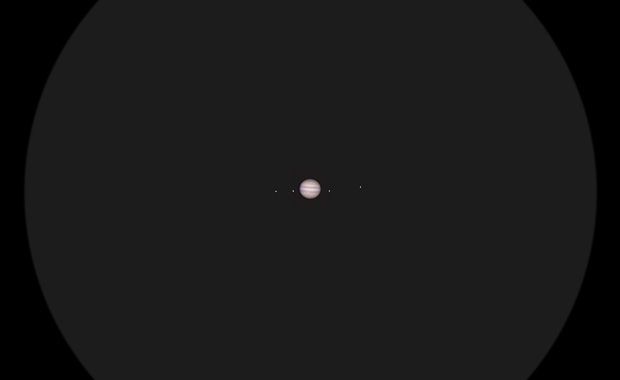
4c. Saturn
Saturn is often called the crown jewel of the solar system, and it is easy to see why. The planet is world famous for its glorious rings that set it apart from any other. And without a question of doubt, make it the most unique looking planetary object of all.
For me at least, the most incredible thing about Saturn is how you can see which side is facing you, as in, which angle the rings are aimed at Earth. This gives Saturn a very surreal feeling as you recognize how the planet is currently positioned.
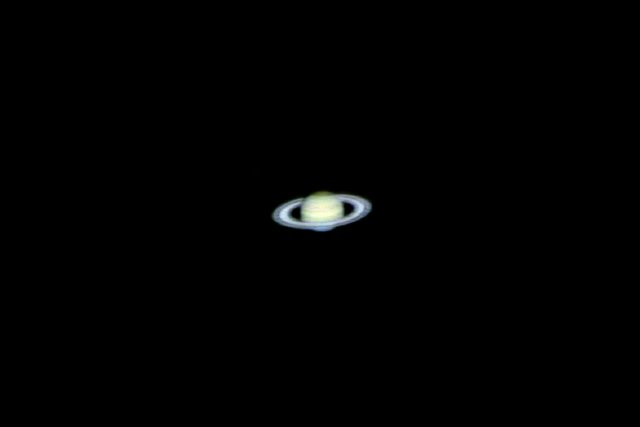
4d. The Moon
The most iconic thing next to trees and forks, the Moon is a true stunner in all circumstances. When at half or bigger, it lights up the ground with a silver glow. And cast sharp shadows of anything beneath it. The glow is so intense, it essentially ruins the night sky anywhere else. But its dominating shine is undeniably beautiful.
Through a telescope the Moon can show many different appearances depending on the power and magnification. A dobsonian of just eight inches will give you extraordinary clarity and allow you to see each and every crater and mark. And if you have a telescope of such power, I'd recommend checking out the terminator line, the point where the day and night meet. And observe how right on the line, giant shadows are cast from large bumps with incredible detail.

Tier 4 Honorable Mention: Mars
Tier 3: Stars and star-formations
3a. Betelgeuse
Sporting a uniquely red coloration, Betelgeuse has attracted the eyes and minds of the many for millennia. This star is mostly well known for two things; it's deep red glare, and its size.
In terms of absolute size, Betelgeuse is a monster, if if replaced the sun, it would reach out past Jupiter, almost 1200 times the diameter of the sun. Looking at it knowing this will boggle your mind to no end. As you wonder exactly how different and less peaceful it'd look from up close. Located in Orion's right shoulder.
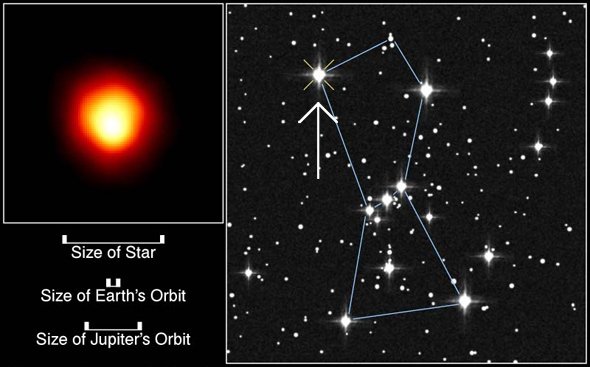
3b. Sirius
The alpha of the sky, Sirius glares like a proud king of the stars, far outshining any other that comes anywhere close. And being the king of the sky, it too has attracted the attention of ancient astronomers for as long as recorded history has stretched. Known as the dog star for its appearance in the Canis Major constellation, Sirius shines under the body of Orion with purer white light.
Being as bright as it is, many wondered in ancient times what made this one star so special, well as we now know, it really isn't any particular factor. Just the fact that it's very close relative to others while also being a bright blue dwarf.
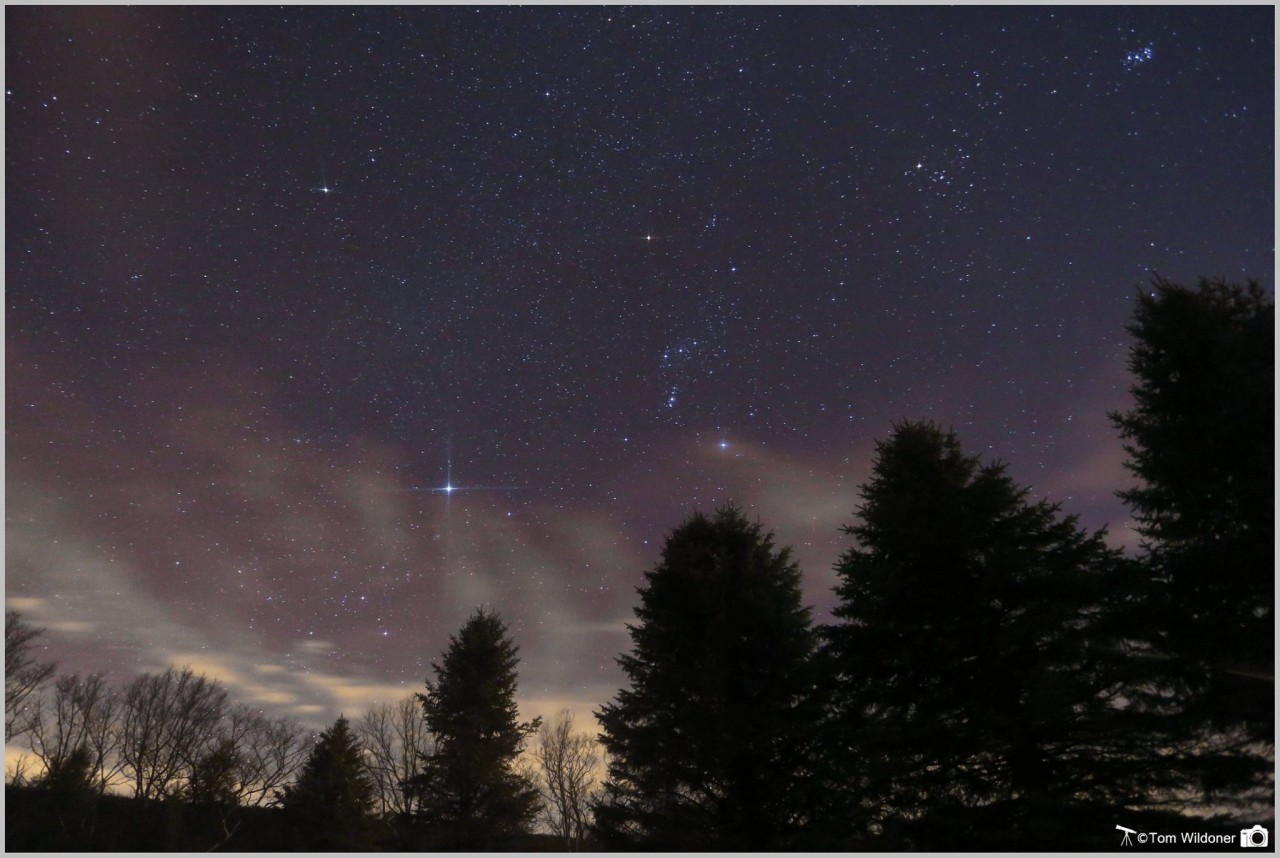
(Notice how much it outshines the others)
3c. The Pleiades
This is the first star formation yet, and perhaps the most well known. If you've ever seen the logo for Subaru, you've seen at least a depiction of this open cluster of stars. Some mistake this for a constellation due to it's widespread area and shape. However in reality The Pleiades or, "Seven Sisters", is in fact a cluster.
They all give off roughly equal light, at least the main ones, and glow a steady blue. If viewed from the best location possible, they offer any telescope viewer a glimpse of their surrounding nebulous gas of which they illuminate. How this gas got there is still debated, some say it's leftover gas from when they formed, some say the cluster simply ran into some ambient gases, either way, it makes for a truly beautiful sight.

3d. The Hercules Cluster
While The Pleiades represent the open cluster variety, the famed Hercules Cluster falls into the group of globular clusters. The difference is in the name, open clusters are loosely bound stars by means of gravity, globular clusters are more tightly packed together held in a ball like shape.
The Hercules cluster is the most well known and observed of these clusters. And with good reason. It is the brightest largest cluster in the sky, flooded with what looks to be countless stars. (There's actually about 150,000.).
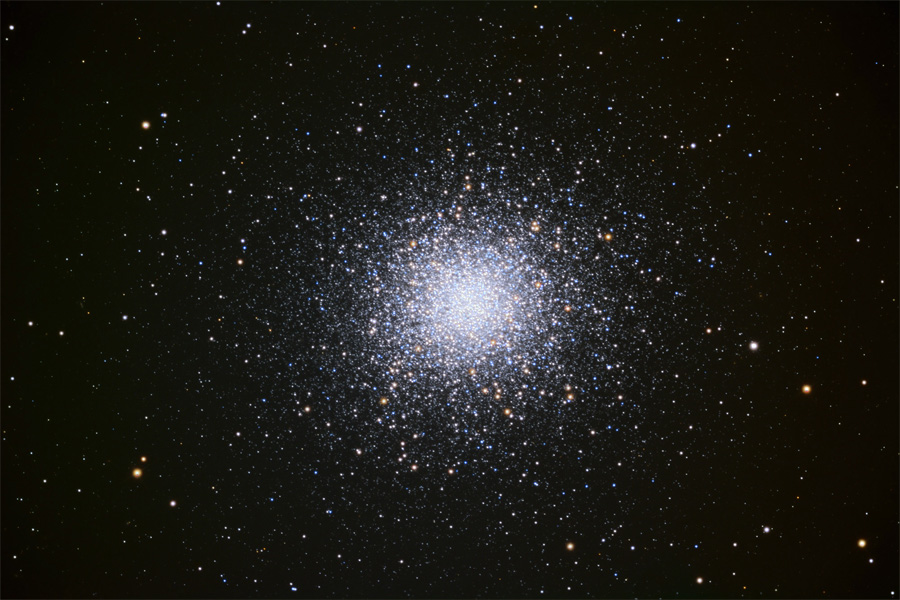
Tier 3 Honorable Mention: Alberio Double star
Tier 2: Galaxies
2a. Pinwheel Galaxy
Located perpendicular to the handle of the big dipper, the pinwheel galaxy is an iconic and beautiful sight. It falls into the rare category of galaxies which face directly at us, meaning we see them in full detail. And the Pinwheel galaxy is a great option to have facing flat towards Earth.
It's also huge, as in the absolute size of this galaxy is almost twice that of the milky way at 184,000 light-years. This gives it a rather large apparent size of around 22 arc-minutes, not bad for something located almost 22 light years away.
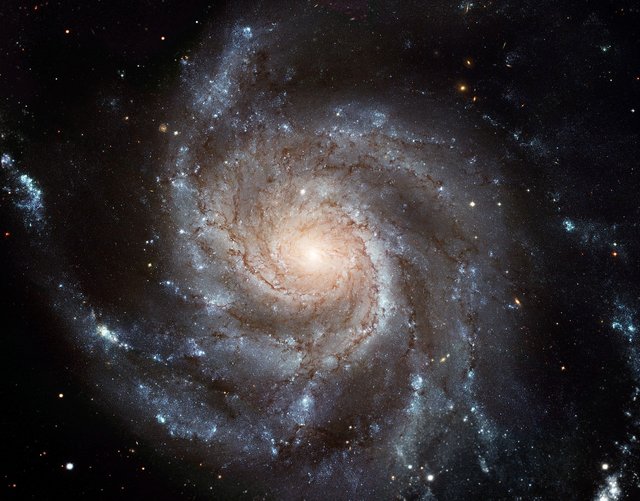
2b. M 81 and 82 Galaxy Pair
Although some may call it cheating to put what is technically two individual objects on here, I find that these two galaxies really are one sight in the end. Although that doesn't mean they're similar, m81 is large, almost equal in size to the milky way, and spiral in shape, while m82 is much smaller at 37,000 light-years and elliptical.
M82 is a particular interest to many astronomers due to it's status as a starburst galaxy. Meaning it is developing stars at a rapid rate. This gives it a very unique color scheme, (Although remember you can't see any colors in galaxies through a telescope), in Hubble images it shows to have regions dense in old and low mass red stars. While the outsides show more high mass blue stars.
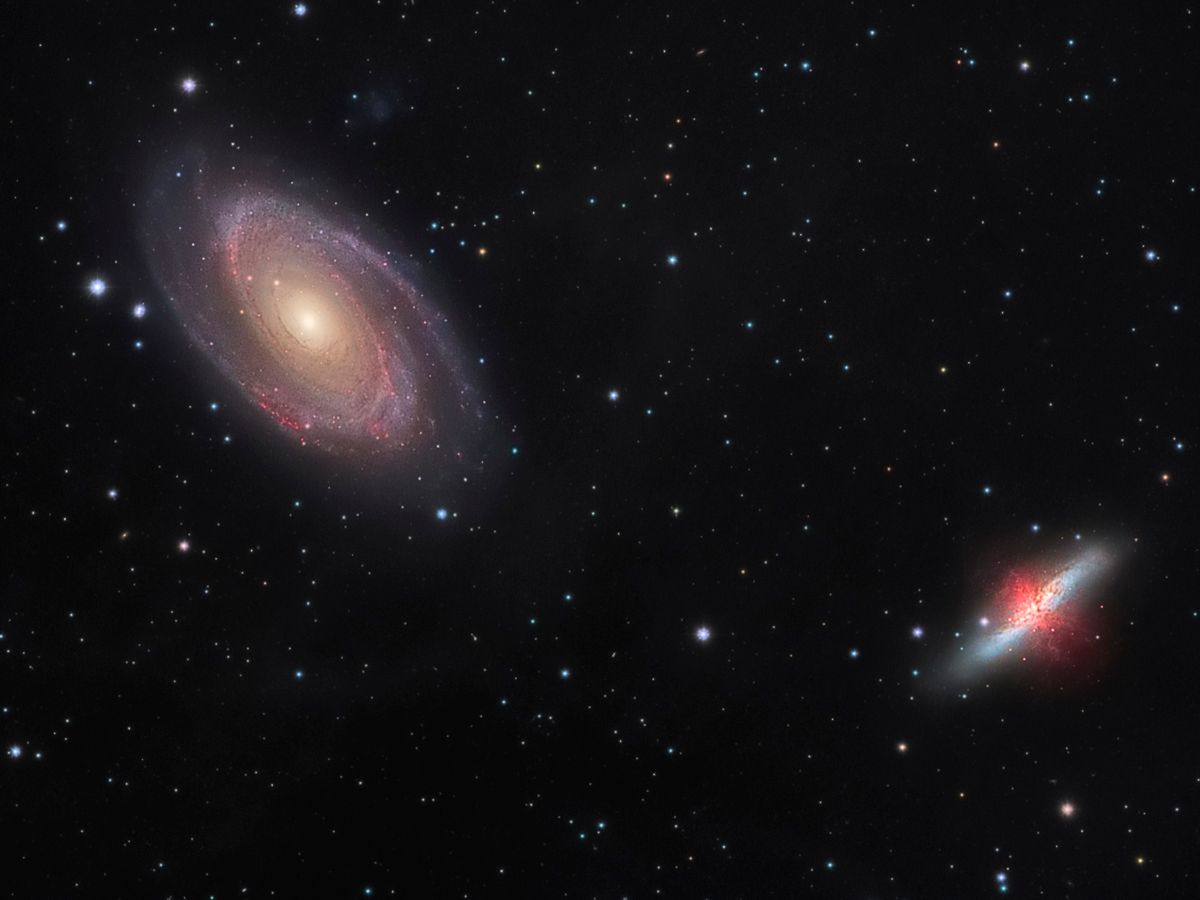
2c. Triangulum Galaxy
A closer member of the galaxy collection, the Triangulum galaxy is one of the three major galaxies in the local group. Which includes the milky way and Andromeda. This one is a bit smaller between the two, at around half the size of the milky way being 50,000 light years across. However it is so relatively close that through a telescope one will see a good portion of their aperture clouded with the haze of this stunning galaxy.
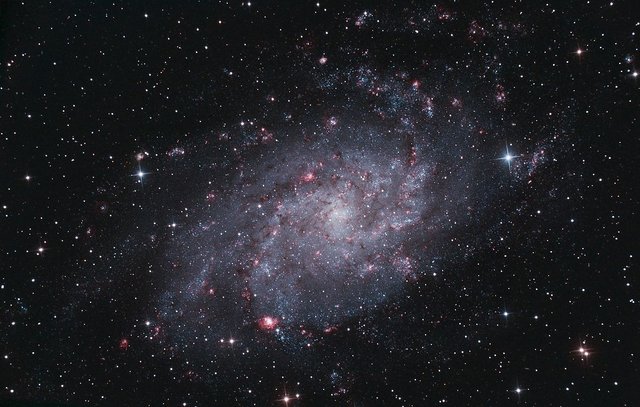
2d. Andromeda Galaxy
The undeniable king of the galaxies, the andromeda galaxy combines being one of the closest with being one of the biggest.
It is just 2.5 million light years away, much less than a majority of the observable galaxies. It is also huge, at 220,000 light years across it stands as one of the largest spiral galaxies known. Not only this, but it will soon combine with the milky way as they near each other through the pull of dark matter, but that's for another article.
It's apparent size alone makes this the best galaxy to observe, if we could see the entire thing, it'd be 10 times the diameter of the moon in the sky, however even in the best conditions a telescope will only show you about 75% of it's length. In a dark sky sight, it will stretch outside of almost any aperture.
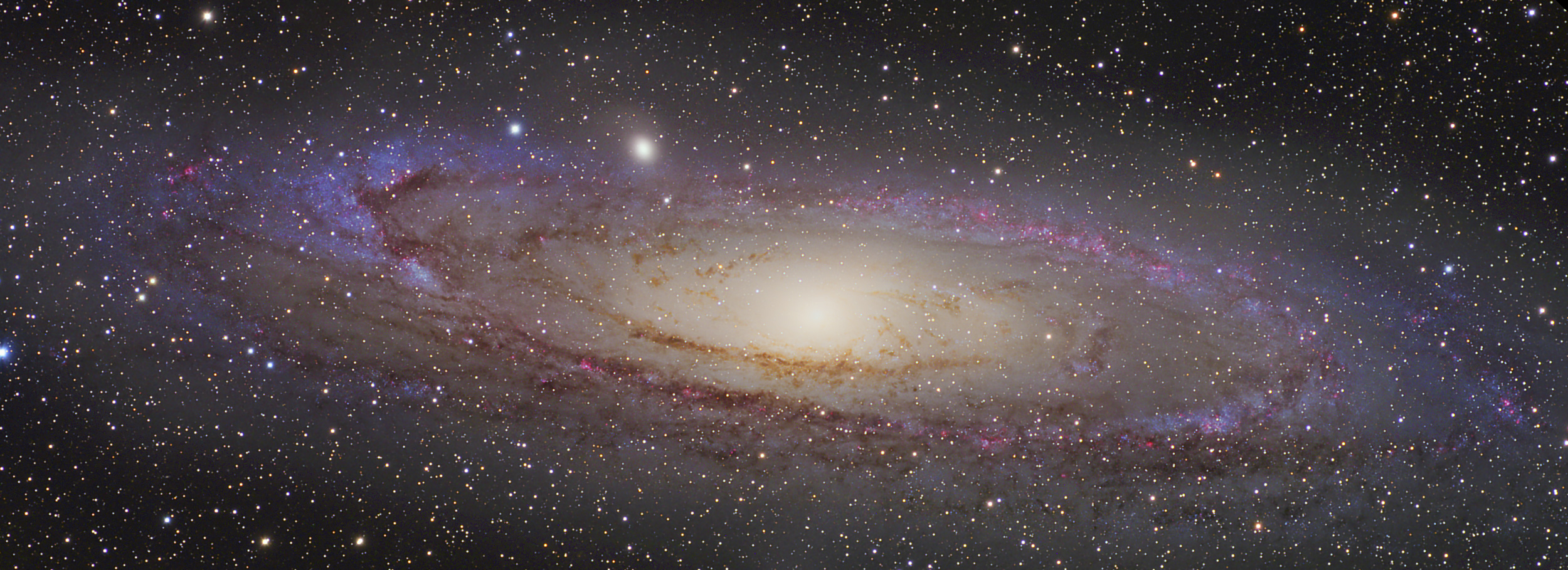
Tier 2 Honorable Mention: Whirlpool Galaxy, (The one at the start of the article)
Tier 1: Nebulae
1a. Ring Nebula
Moving into the final and in my opinion most stunning category, the Ring Nebula is an iconic eye-like solar shed planetary nebula with a tiny sky-stature and clear defining outer lines.
A popular target for amateur astronomers, this nebula may be small, but the clarity in it's outer walls is incredible. Giving way to a sharp appearance and clear borders. And although it cannot be seen with a telescope, a tiny white dwarf remnant lives within its center, giving it an even better eye appearance.

1b. Eagle Nebula
This one is famous for two reasons, the first is the iconic, "Pillars of Creation" photo, from Hubble. It was a piece of this nebula. And the other famous picture is that which shows a figure that resembles a chickens head and neck. Again, just one part of the nebula's entirety. This, unlike the ring nebula, is a star factory. Meaning it did not come from the explosion or shedding of a star, and its much larger. What's cool about looking at these is that you know that you're seeing a stellar nursery, a place similar in environment to that which all stars were born.

1c. Crab Nebula
Back to the planetary nebulae, the Crab nebula is a famed example of a supernova remnant active in space. When observed, one simply sees a small hazy oval, but up close, this it an expanding explosion of hot stellar material with a neutron tar rapidly spinning at its center.
Perhaps the coolest thing about this one is that it isn't even that old on the scale of things, as it was first observed in 1054 AD by Chinese astronomers. Interestingly, it was said to be bright enough to be seen during the day for a week or so following it's initial explosion, and could be seen with the naked eye at night for almost 2 months before disappearing from their sight.
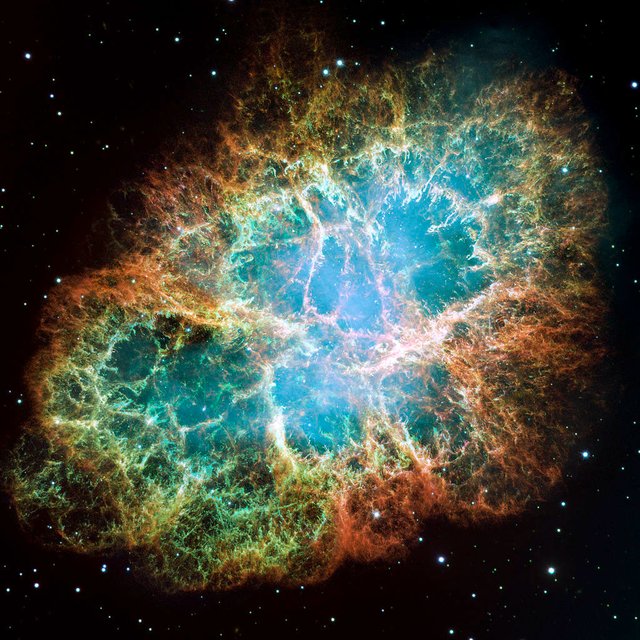
1d. Orion Nebula
If you were to ask me what the most beautiful of all the cosmic objects there are were, I'd be listing off dozens of messier objects, planets, stars and whatever else is out there. It's just impossible to narrow down them all.
But, if you asked me what the single greatest astronomical object one could see is, there'd be little to no question in my mind what my answer would be. The awe inspiring Orion Nebula is the most famous nebulous sight in the sky. And with good reason. It is a star factory, a stellar nursery. And it is the closest of any of them. It's size is comparable to that of the moon and through a telescope, the detail in its gaseous form is absolutely breathtaking. And what tops it all off? This is one of the only, and for a nebulous object the only targets in the night sky that shows color.
So many people are somewhat disappointed by the night sky's apparent lack of color, which is due to the fact that color simply has to go a long way through space, and our eyes don't often pick it up at all from a distance. But there is one exception, the Orion Nebula, although red-ish pink in pictures, shows in a telescope with a dark variation of Jade green. Which comes from the oxygen, and makes for one of the most unreal and stunning things one can ever lay their eyes upon.
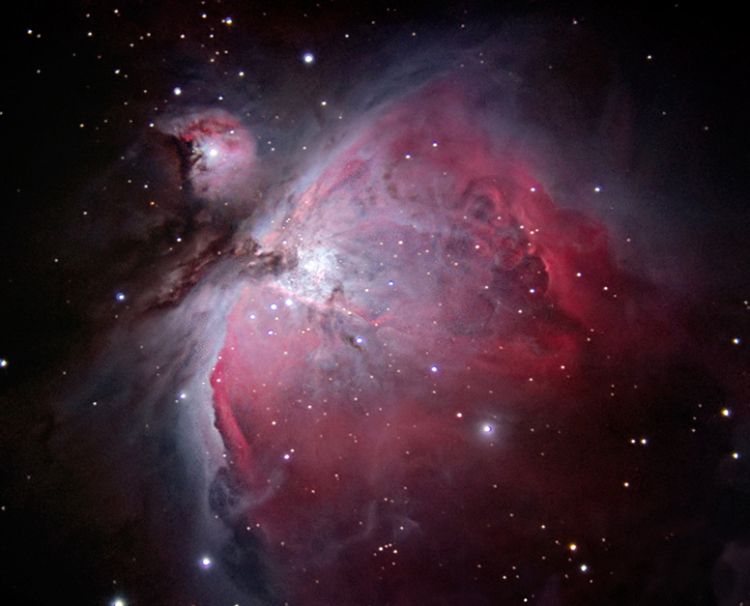
Tier 1 Honorable Mention: Dumbell Nebula
Image Origins, (There are quite a lot of them, should be in order):
https://en.wikipedia.org/wiki/Whirlpool_Galaxy
http://earthsky.org/astronomy-essentials/visible-planets-tonight-mars-jupiter-venus-saturn-mercury
http://www.deepskywatch.com/Articles/what-can-i-see-through-telescope.html
https://samsastro.com/images/solarsys/Saturn.htm
https://www.timeanddate.com/topics/moon
http://www.slate.com/blogs/bad_astronomy/2014/09/08/betelgeuse_astronomers_give_it_100_000_years_before_it_explodes.html
http://earthsky.org/tonight/is-sirius-the-most-luminous-star-in-the-sky
https://www.thinglink.com/scene/789943010535145474
http://www.messier-objects.com/messier-13-hercules-globular-cluster/
https://en.wikipedia.org/wiki/Pinwheel_Galaxy
https://apod.nasa.gov/apod/ap080325.html
https://en.wikipedia.org/wiki/Triangulum_Galaxy
http://billsnyderastrophotography.com/?page_id=3275
https://apod.nasa.gov/apod/ap130605.html
https://apod.nasa.gov/apod/ap151015.html
https://simple.wikipedia.org/wiki/Orion_nebula
Congratulations @astronomyizfun, this post is the third most rewarded post (based on pending payouts) in the last 12 hours written by a User account holder (accounts that hold between 0.1 and 1.0 Mega Vests). The total number of posts by User account holders during this period was 1000 and the total pending payments to posts in this category was $1459.16. To see the full list of highest paid posts across all accounts categories, click here.
If you do not wish to receive these messages in future, please reply stop to this comment.
Resteemed.
Thanks for posts it's amazing i am looking universe thematic, great job )
Awesome. I have caught a glimpse of the Andromeda Galaxy with my eye a couple of times. Well I live close to the equator and sometimes on a clear night, the stars and galaxies spring into view. Although it looks like a fuzzy blob of cotton in the sky, its still awe inspiring. Great post.
nebulas we're good to see